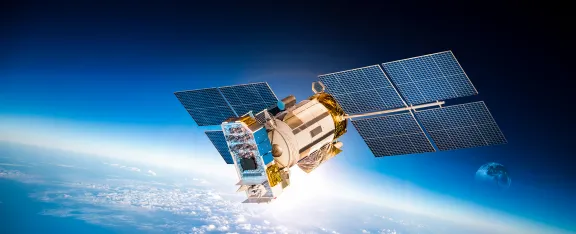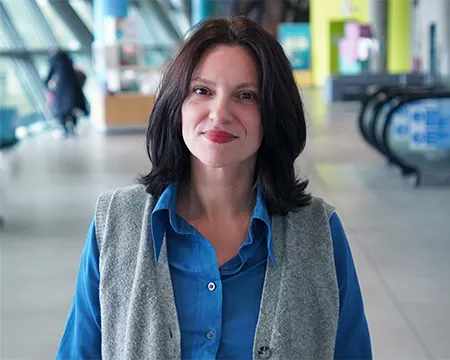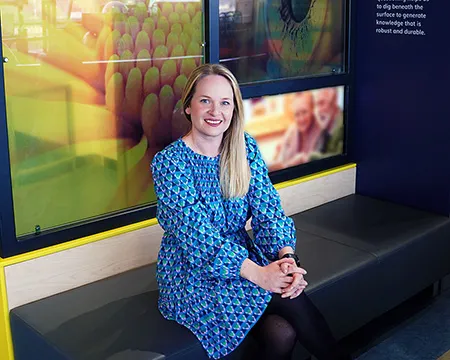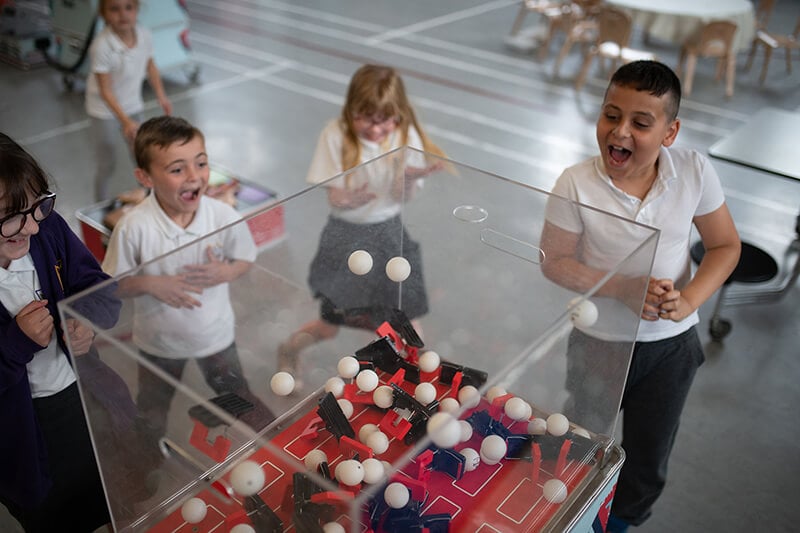Keeping a weather eye on Earth

Writing for the science centre blog on how satellite's can help keep an eye on the weather on Earth, here's GSC Planetarium Coordinator, Nina Cameron...
If someone was to say the word “satellite” to you, what would you think of? Would you think of satellite television, or would you think of the navigation system in your car or on your smartphone? What about the smartwatch that tracks your every run or cycle? Would you picture something in orbit, like the International Space Station, or even a moon orbiting a planet?
What is a satellite?
A satellite can be a lot of things, essentially it’s anything that orbits another object in space. They can be natural, like a moon, or artificial, like the International Space Station. Artificial satellites have been used for decades for communications, to explore the planets in our solar system, and most importantly to turn their cameras towards Earth to keep an orbital eye on humanity.
Monitoring climate change with satellites
As the effects of the climate crisis and extreme weather are felt across the globe, remote sensing satellites launched by NASA, the European Space Agency (ESA), the Japanese Space Agency (JAXA), and others are crucial in predicting how the changing climate will impact us in the long and short-term, and in giving us key information that can help us slow or stop that change. The first satellite in orbit, launched 64 years ago this October, was the first one to investigate the Earth’s atmosphere from space. The Soviet Union’s Sputnik-1 sent back information about the upper atmosphere during its three-week mission, including the density, temperature, and pressure of the ionosphere.
From there, scientists and engineers developed technology that can now monitor key information like changes in the amount of vegetation growing in rainforests, how much sea ice fluctuates over a year, and even the colour of the oceans. The last one is surprisingly important, it’s from this that we can observe the growth of phytoplankton, little aquatic photosynthesising plants, which are an incredibly important part of the ocean food chain. They also produce at least 50% of the oxygen we breathe, and their growth can be affected by warming oceans. Given their important contribution to the atmosphere, understanding them better is vitally important to a lot of life on Earth, including us.
Other changes in the oceans, in particular melting sea ice, have long been observed from space. As the polar ice caps melt, they’re not just impacted by climate change, they’re also driving it. As they release fresh water into the oceans, they could disrupt the Gulf Stream. This huge, global current of water is responsible for keeping the weather in Glasgow so balmy, relative to other cities on the same latitude, like Moscow. Without it, average temperatures in the UK could be set to get an awful lot colder, impacting life as we’re used to it in a big way. These long-term observations are key in our planning for the future.
Predicting extreme seasonal weather
Satellites can also help us predict sudden, seasonal weather events like hurricanes, monsoons, and periods of biting cold. The Beast from the East or the following heat wave in 2018 may have taken many of us by surprise, but on a website like NASA’s World View, you can watch the weather fronts as they move in, all from images taken from NASA’s Terra satellite.
Satellites can also play a huge role in the recovery after extreme weather too. Following the hurricanes Irma and Maria in 2017, satellite data of the Caribbean islands was combed through by thousands of volunteers on the Zooniverse citizen science website, some of it in just a matter of hours. Damage to roads, buildings, and other infrastructure was spotted in pictures from space, and aid and rescue teams were able to be sent exactly where they were needed.
In the Planetarium we are often asked why so much money is spent on space missions, like NASA’s plans to return to the Moon, or the new rover that ESA are sending to Mars, when there are so many challenges being faced here on Earth. We usually answer that that significant amounts of the funding that space agencies get goes towards the Earth observation mentioned in this article. These missions directly benefit us and help us make decisions that will protect ourselves and this pale blue marble that we call home.
This blog post is adapted from an article that first appeared in Glasgow Times on 1 October 2021, written by Nina Cameron from Glasgow Science Centre.
Additional References
Frontiers - "Satellite Ocean Colour: Current Status and Future Perspective"
WWF - "Six ways loss of Arctic ice impacts everyone"
Zooniverse - "Planetary Response Network & Rescue Global: Caribbean Storms 2017"
The David Elder Lectures
The David Elder lectures, in partnership with the University of Strathclyde, will return on the 7 October at 1900 on YouTube and Facebook Live. Join NASA’s Dr. Benjamin Hamlington as he discusses how satellites are used to understand changing sea levels.





